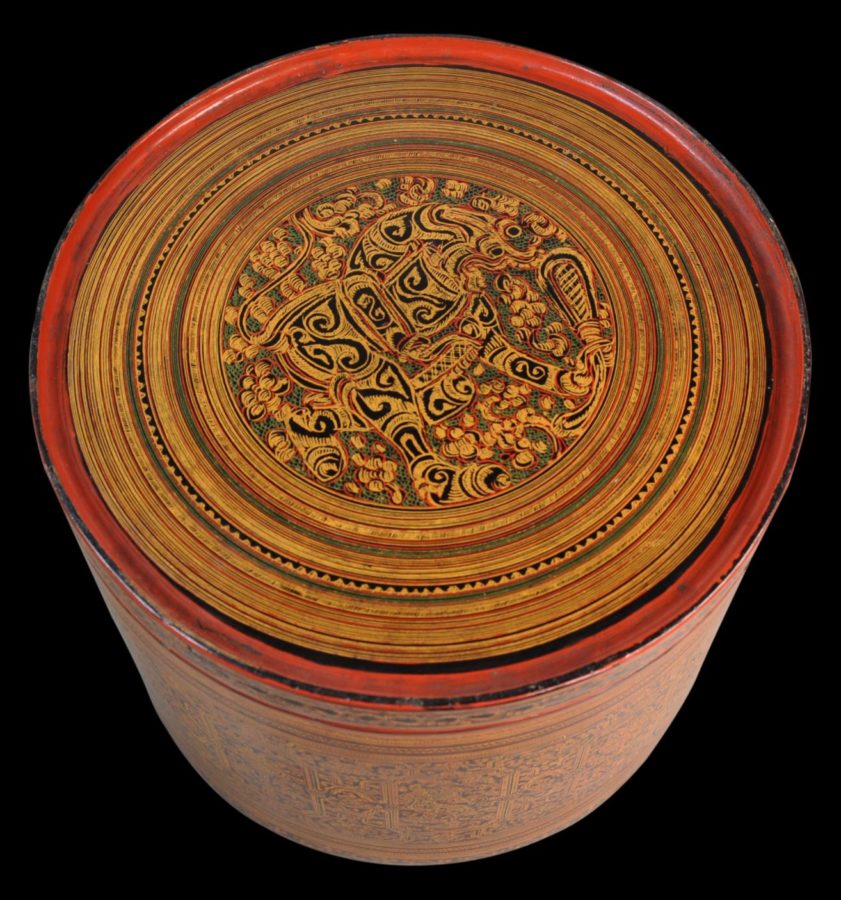This is an unusually fine lacquered betel box (kun it) in terms of its decoration and its condition.
The exterior of this fine betel box is decorated with fine engraving (yun) work. The top of the cover is decorated with the eight Burmese animal symbols (gyo-hsit-lon) for the traditional eight-day Burmese week. The dense crowding of small figures a tight foliage scrolls is known as a yok let pagya pattern. The lattice structure that decorates the sides of the box in which all the motifs and symbols are arrayed is known as a gwin-shet design.
The sides of the cover are decorated with the symbols for the Burmese zodiac (ya-thi).
The box is not signed which is an indicator that it is likely to date to the 19th century (Isaacs & Blurton, 2000, p. 112).
The box comprises the base, the cover and two internal trays. The interiors of the box, cover and trays are in red-orange lacquer.
It was designed to hold leaves for the betel quid as well as receptacles that held the various other ingredients of the betel quid. The box is constructed from thin slithers of woven bamboo that have been lacquered and incised.
A similar example is illustrated in Isaacs & Blurton (2000, p. 112), and another is illustrated in Than Htun (2013, p. 76).
This item was obtained in the UK and almost certainly came to the UK during the colonial era.
The box has been preserved extremely well and is in excellent, museum-quality condition and is with out restoration or loss.
References
Fraser-Lu, S., Burmese Lacquerware, White Orchid Books, 2000.
Isaacs, R., & T.R. Blurton, Burma and the Art of Lacquer, River Books, 2000.
Than Htun (Dedaye), Lacquerware Journeys: The Untold Story of Burmese Lacquer, River Books, 2013.











